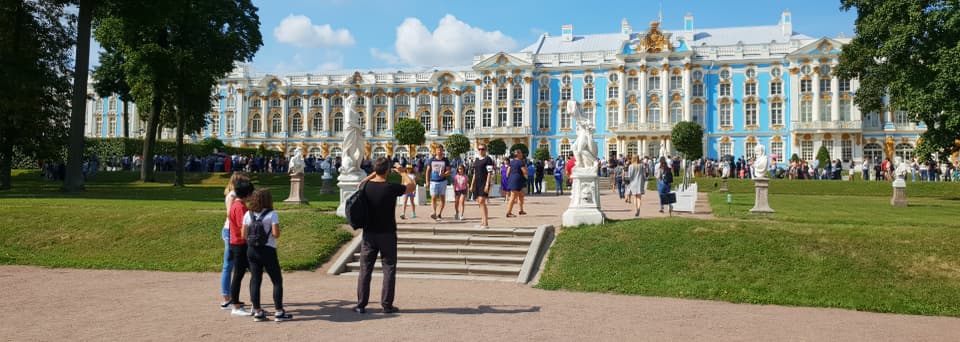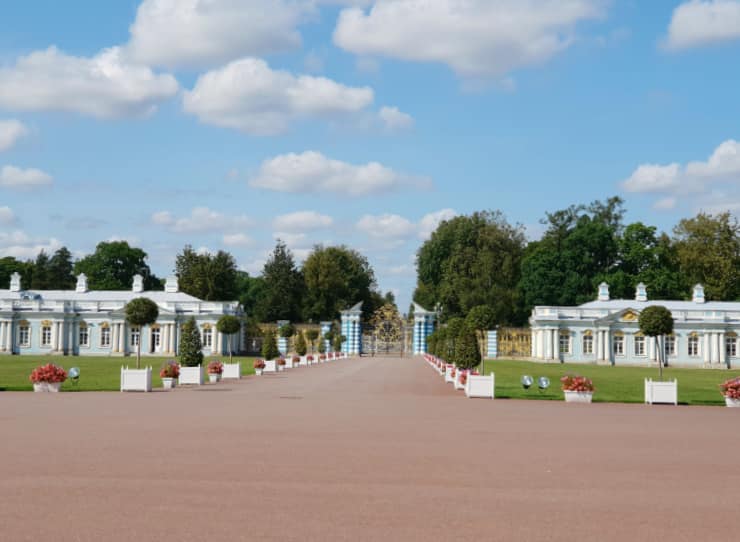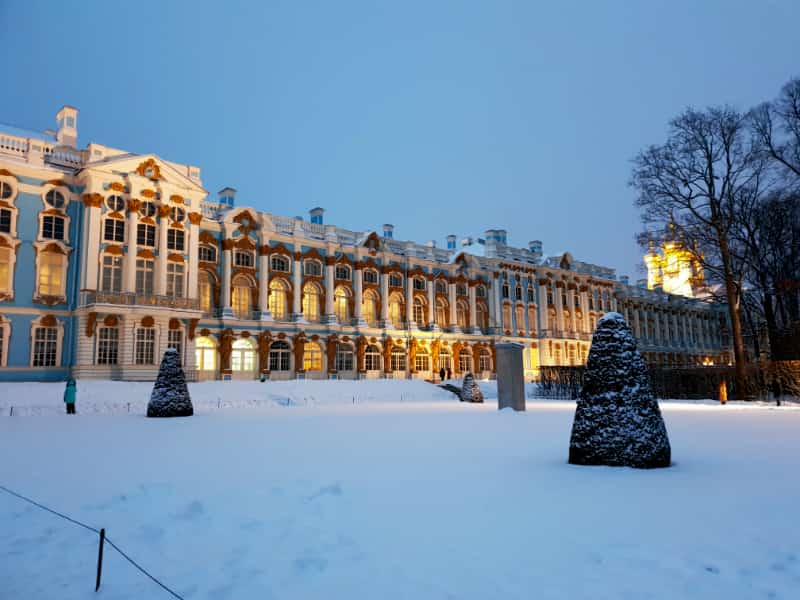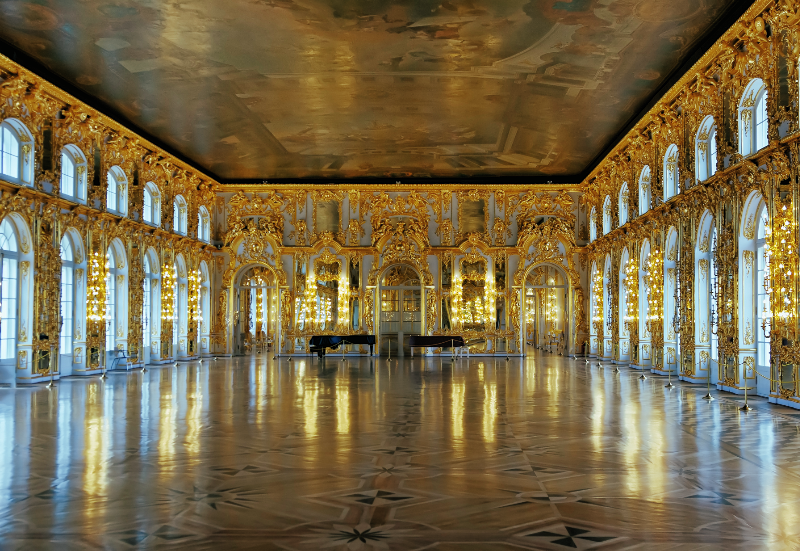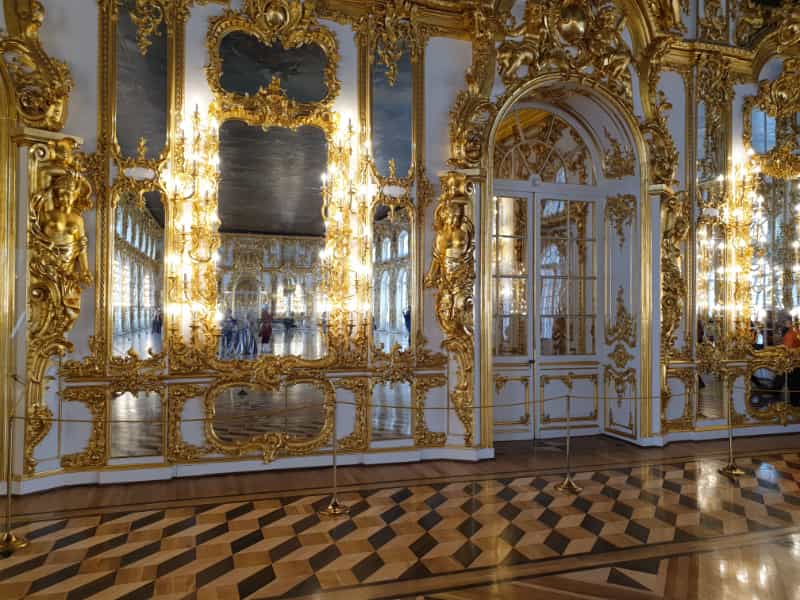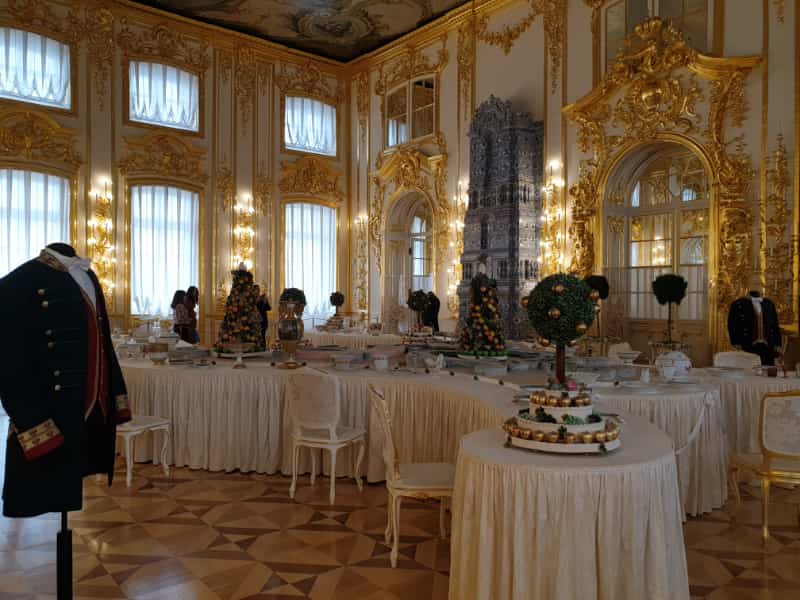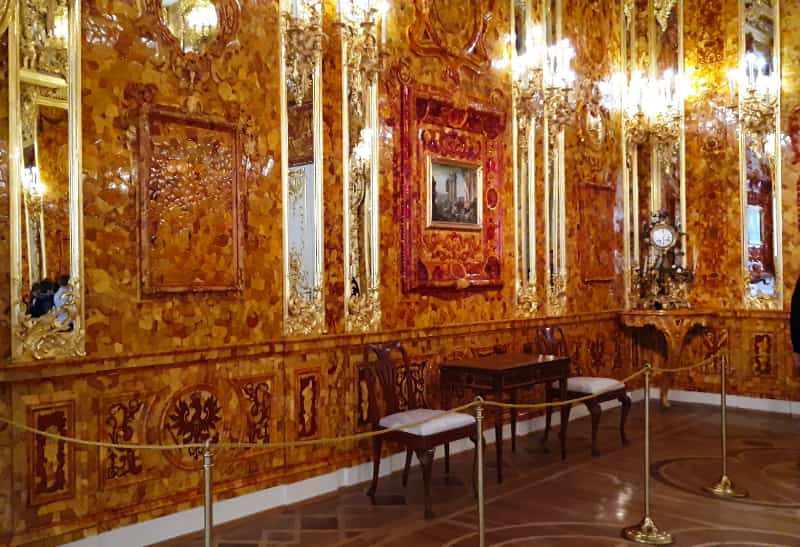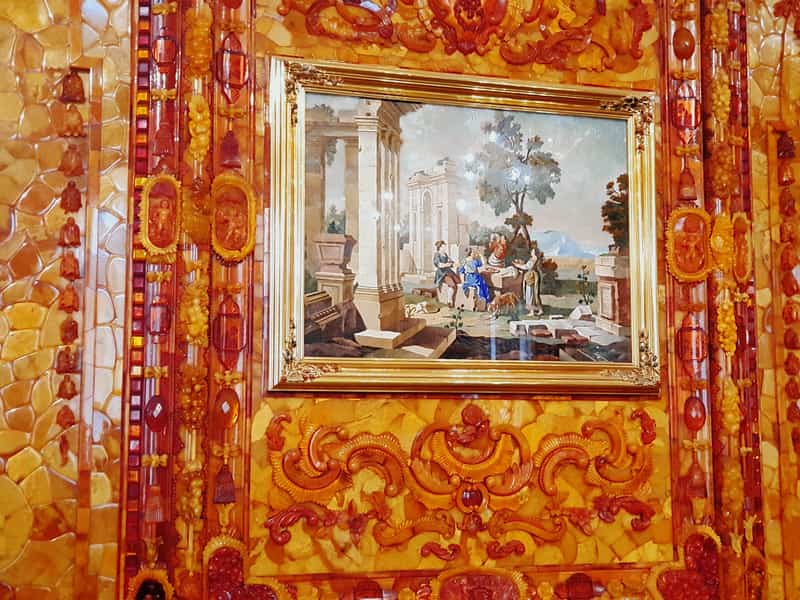We invite you to the world of Imperial Russia, when St. Petersburg was the capital, its magnificent palaces were inhabited by the Romanov dynasty and stylish ladies accompanied by elegant gentlemen were walking in the picturesque landscaped gardens. A visit to the Catherine Palace will bring back those days. Everything in the palace is a luxury. Everything is history.
Rove back to the Imperial Northern city: opulent ball rooms and parlours are waiting for you.
Catherine Palace and Park is the main attraction of Tsarskoye Selo, Russia
The history of this Imperial summer residence started over 300 years ago. Throughout this time it saw rise, glamour, decline in the revolutionary days, destruction in the wartime and revival in the time of peace again.
When Peter the Great captured this area during the Northern War, there was a small farm, called “Saari Mois” (meaning literally “a farm on a hill”). The name was Russianized to Saarskoye Selo (“a village on a hill”). Later, because of the country-side residence of Peter the Great’s wife it came to be called Tsarskoye Selo, which sounded close, but meant something different – Tsar’s Village. Peter 1’s second wife (who soon succeeded him as Catherine 1) immediately ordered a plain stone mansion to be built, which was called Catherinehof.
Peter 1’s daughter, Empress Elizabeth, was not satisfied with her mother’s mansion, which looked too simple. She commissioned Francesco Bartolomeo Rastrelli to rebuild Catherinehof completely. Rastrelli was to apply his baroque skills, which he did most lavishly, bringing about a magical transformation. A shimmering palace of immense size and grandeur answered the tastes of Elizabeth. It was intended to impress and it definitely does. Rastrelli’s vista of golden doorways, his Picture gallery and his Great Hall impressed with light and golden fantasy. No visiting diplomat or monarch could possibly have any doubts that Catherinehof belonged to an empress of fabulous power and wealth.
The next ruler – Catherine II – didn’t like all this “barbaric splendor”. By that time fashion moved on, taste in Western Europe had moved to neo-classicism, and that was what Catherine the Great wanted to have. As a result, a harmonious combination of the baroque and classical was achieved and the interior décor of some parlours became more elegant and laconic.
Museum’s website
Catherine Palace
The 19th century brought new styles and trends in the interior décor of the old palace too.
The October take-over of 1917 started a new page in the history of Russia and the former tsars’ palaces. The Catherine Palace became a museum telling people about excessively lavish life style of the former rulers. The exclusive royal residence meant for costly festivals and pompous ceremonies became available for simple people – workers, soldiers and peasants. It served a vivid contrast between old and new Russia. Amazing, but the first visitors were respectful, full of intelligent interest and seemed determined to be worthy of what they were finally allowed to see.
World War II brought in the history of looting and destruction of the residence, which happened to be on the occupied lands close to the front line. When the Russian army liberated the town of Pushkin, Catherine Palace was a ruin. The walls still stood, but there was nothing behind them. One end of the palace collapsed. German soldiers had been quartered in the Catherine Palace. The Agate Rooms seemed to have witnessed some riotous parties. At some stage, a bomb or large shell hit the palace above the Great Hall, bringing down its roof. Of Rastrelli’s golden suite of doorways nothing remained but charred brickwork. Underfoot lay piles of rubbles. No wonder that many people doubted the feasibility of Catherine Palace restoration.
The general conservation of ruins was finished by 1949. After that the facades of the palace were restored. And only as late as 1957 the Council of Ministers of the USSR voted to allocate the necessary funds for the Catherine Palace to be restored inside and out. And from that time on it’s the triumphant success of an extraordinarily talented team of restorers that we are speaking about.
Today in the corner of most rooms, a single black and white photograph shows the same room in 1945, amid the smoldering wreckage of the wartime damage.
The restorers joked, that in each of the rooms they had the freedom to choose which epoch to bring back. But in general it was agreed to piece together the 18th century Catherine Palace decor, using the techniques and tools of the 18th century craftsmen. One by one the opulent rooms of the Catherine Palace were opened after the restoration to bring joy and hope in the hearts. But by the end of the 20th century there was still a plenty of work to be done.
The Amber Room – Revival of the World Wonder
The Amber room is the most popular interior of the Catherine Palace. Although what the visitors see now is a masterfully done replica: the authentic Amber room disappeared without a trace, stolen by the Nazis during WWII.
How was the legendary room revived? Using black and white pictures, detailed descriptions and sketches of the Amber panels. Some artefacts also stolen by the Nazis were found in West European countries and returned to the museum.
- The restorers used over 6 tons of Baltic amber and the 18th century tools of amber craftsmen;
- The masters deciphered monochromatic photos to convey the colours;
- It took 24 years and 11 mln US dollars to recreate the magnificent Amber Room.
Add a special tour to the Tsarskoye Selo Amber Workshop to see the work of amber craftsmen today and learn the story of revival of “the 8th Wonder of the World”.
After the restoration was over people from all over the world got interested in the history of the Catherine Palace and wish to see the revived legend…
Would you like to see the unique Amber panels? Plan a tour with our company. You can request a tour to the Catherine Palace separately, or include it in your 1-day or 2-day or 3-day tour itinerary.
Visit the museum with comfort.
It’s easy to arrange a trip to Tsarskoye Selo and Catherine Palace!

